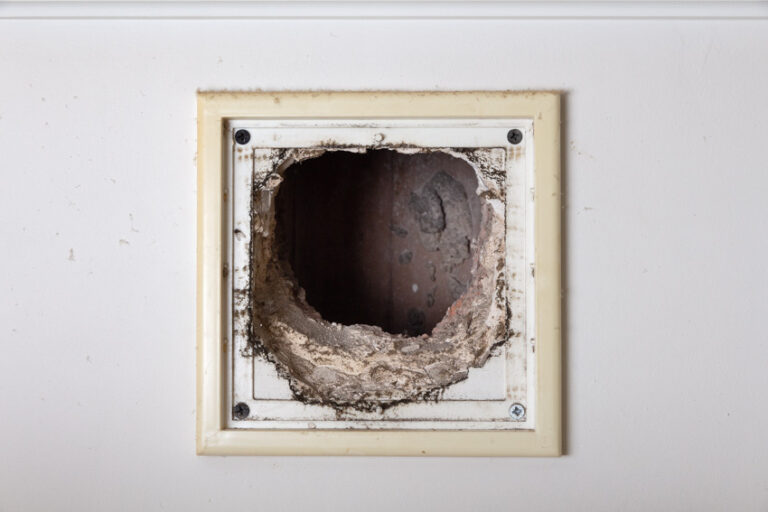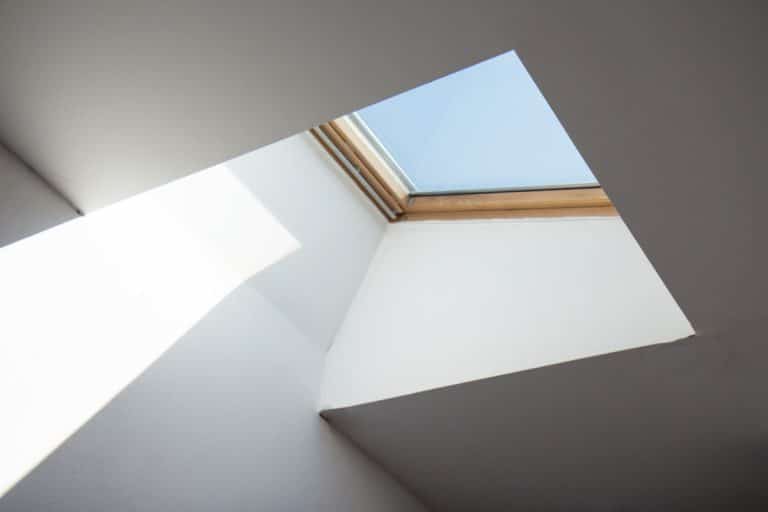What’s the Difference Between Grout Vs Caulk? Comparison Guide

Any DIYer, be it novice or experienced, needs to understand how common adhesives vary compared to each other. Putting this knowledge to good use will ensure that your various tile projects will actually be able to yield long lasting results. If the goal is for you to get some projects started on replacing, repairing, or installing new tiles completely; knowing about the main differences between grout and caulk is key. Both of these products are basic materials used in most tile projects.
They both have adhesive capabilities or properties. Although they do have similarities, they also have differences upon closer inspection though. Each material has its own specific uses. They aren’t exactly interchangeable. Here’s everything you need to know about grout vs caulk for your next tiling project.
Difference Between Grout And Caulk
Grout is mainly a masonry material. It comes in a dry powder form and is usually packaged in a bag. To use grout, you will have to mix it with water. Doing so will activate its adhesive properties. Upon application and after a certain amount of time required for its curing, grout transforms into a rock-hard consistency.
Caulk, on the other hand, is a more flexible material. It comes in a semi liquid form. It’s usually a mixture of acrylic, silicone, and latex. Its packaging comes in tubes whereas grout comes in bags. Caulk’s main difference from grout is that it retains its consistency even after it cures. It can stretch and move along with any movements in the house; especially if it settles.
What Is Grout?

The main purpose of grout is to fill the gaps between the tiles after they have been installed either on your floors or walls. Grout is an essential material in ensuring that your tiles don’t end up shifting. It is also a great way for you to protect your tile. It keeps the tiles’ edges from chipping.
Grout has two variations: the sanded and unsanded grout form. Sanded ground is meant to be used in tile joints that measure 1/8 inch or wider.
Unsanded grout, on the other hand, fills smaller tile joints, usually less than 1/8 inch or smaller. When picking out which grout to buy or use, always make sure that you read through its packaging as a guide.
The intended purposes for that grout type will usually be indicated there. Not all grouts are suitable for all types of tile. Also, there will be certain types of grout that have additives that offer extra adhesive power and durability for your tiles.
Grout works best with wet areas. Although its finished surface is something that is more porous than caulk, it still works better for tiled shower floors and walls. This is mainly because of the way that this material binds with the sub-floor or the backer board – these are materials that are made out of concrete and are typically placed right behind the tiles.
When combined, your grout, backer board, and tile will form a solid masonry surface that can be quite impervious to water. This material combination is great for keeping moisture from your wall studs, ensuring that they don’t absorb it. This is effective in preventing not just wood damage but mold growth as well.
When To Use Grout
Grout has one sole purpose and one sole application, it is to fill the joints right in between your tiles. Whenever there are gaps right where your tiles come together or converge, grout usually needs to be applied to get the area closed off. That’s pretty much the one and only time you use grout and that’s pretty much it’s only use for it at the end of the day.
Pros And Cons Of Grout
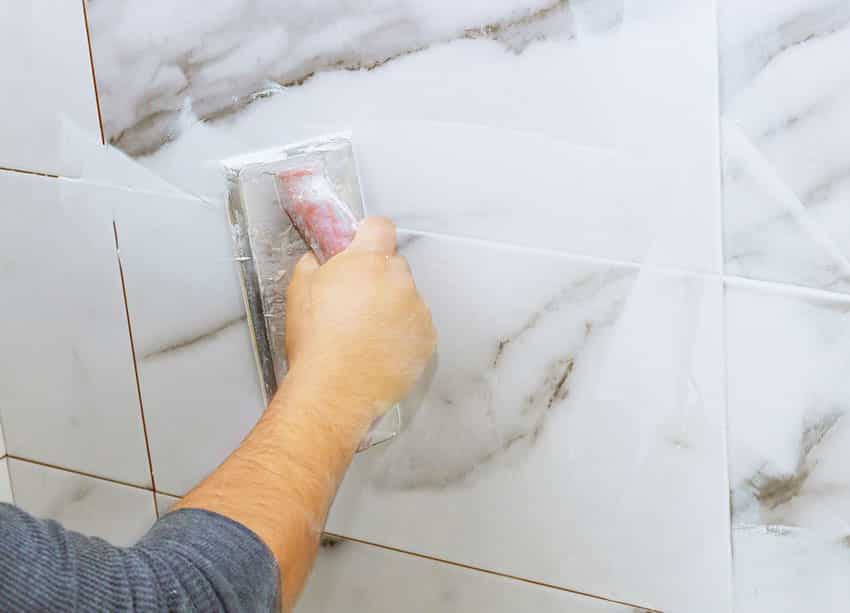
Pros of Grout
Grout is far easier to apply than caulk – It spreads easily over your new tiled surfaces. It can get worked into the joints with the use of a sponge squeegee or applicator. The excesses on the tile surface should be wiped off before it dries. It’s a little messy but it’s fairly easy to handle.
Grout is more durable – As we’ve previously mentioned, when your grout mixture hardens, it eventually hardens into a solid masonry surface. This makes it far more durable and far longer lasting than caulk. This also means that grout has a longer staying power compared to the other material.
Grout can come in different colors – You can match your grout colors to your tile colors, or you can even play with contrasts if that’s how you like it.
Although grout materials are predominantly white, there are variations in colors that you can buy, or you can even mix them in so that you ultimately get colored grout lines. It also isn’t unheard of for you to paint your grout lines while you’re at it for added accents. You can’t really do this with silicone caulk. You get a clear silicone color and that’s pretty much it.
Cons of Grout
Grout is very prone to developing stains over time – This is mainly because of the fact that it is a porous material. This can make it very prone to developing stains and mildew. Silicone caulk, on the other hand, is very suitable for wet areas and is quite waterproof. You can just get it wiped clean with a rag and it will come back looking good as new and spic and span.
Grout lines, on the other hand, require more care and maintenance. It should be sealed. It needs to be cleaned weekly. If this isn’t done, this can lead to stains in the grout lines.
Grout is difficult to replace – When the grout lines start to crack or crumble, you need to replace it right away. It’s a complex process of having to use a grout saw or some type of rotary tool so that you can grind the old grout line away. Once you’ve cleared it out, this is the time you can mix your new grout mixture and then apply it to the joint.
What Is Caulk?
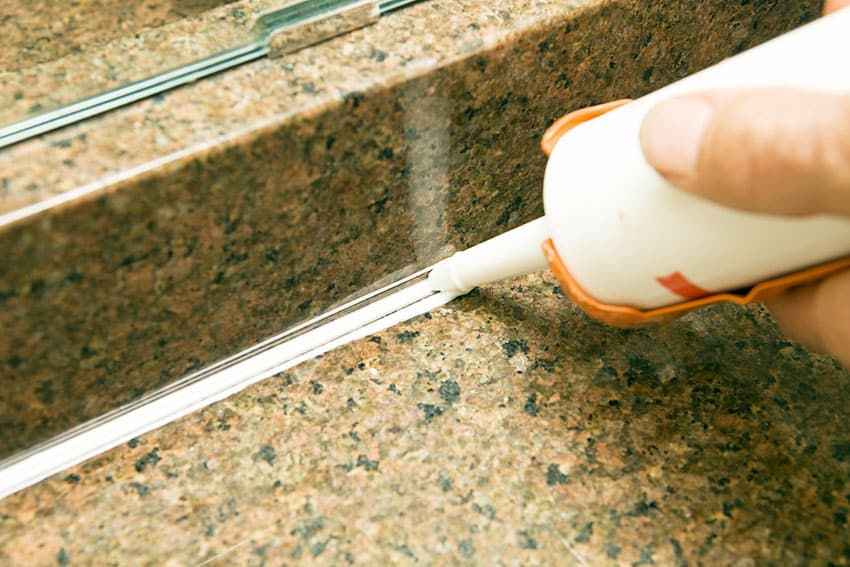
The main purpose of caulk is to seal the seams between your tiles and the fixtures you may have on the floor or walls. What it provides is a waterproof type of seal where the tile is usually installed alongside other materials such as faucets, sinks, walls, bathtubs, showers, and so on. A line of caulk that has been carefully run is called a “bead”. It serves as a finishing touch. It is also something sticker than grout. It can adhere to different types of surfaces and different types of materials. It can work with glass, wood, drywall, or even porcelain fixtures.
Caulk works best with angled seams. Although grout may be essential in filling tile joints for the walls, showers, or anywhere else you may have a need for them; caulk still reigns supreme if say, you have tiled shower walls that meet. Caulk is also great for when a tile wall meets the floor. There will be certain instances wherein grout can show some cracks in the seams when the house settles. This is where caulk can save the day. Caulk is usually filled on the seams. They are usually matched with the tile color.
When To Use Caulk
Caulk has such a diverse use that the question should really be: “When should it not be used?” Caulk can be used to seal any construction seam you can possibly see or have in and around the house, or even in the exteriors of the house. It can be seams created by two surfaces of wood, or wood and glass, or steel and concrete, and so on and so forth. It has such a diverse use that it can be used in literally any type of construction seam.
Pros And Cons Of Caulk
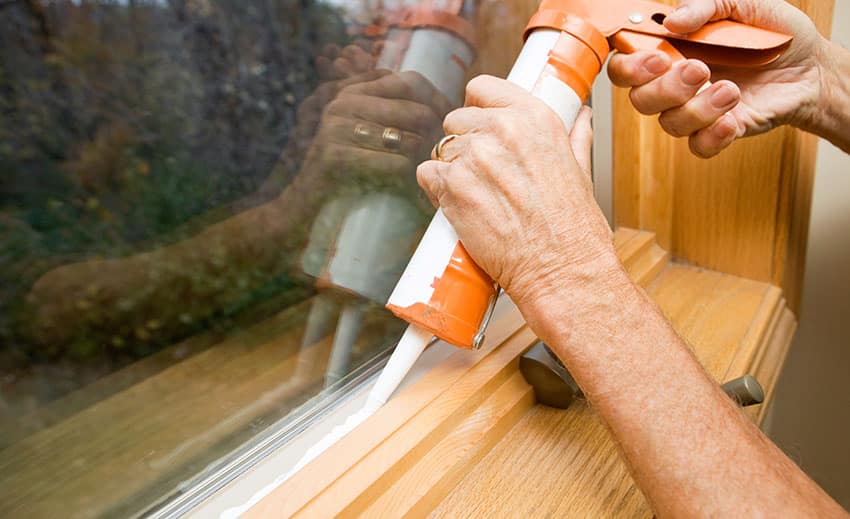
Pros of Caulk
Caulk is easily replaceable – When either material starts to crack, crumble, or fall away; be it grout or caulk, they both need to be replaced. Replacing caulk is a really simple and easy process. You just need to scrape off then pull the old and damaged caulk bead away from the tile seams or joints, and then you can run a new bead to replace it. Replacing a grout line, on the other hand, is a bit more complicated.
Caulk is versatile – Grout is specifically used to be applied in between the grout lines. That’s it’s one and only use, unfortunately. Caulk, on the other hand, is something that is so much more versatile than that. It can fill in seams and awkward spots all over the house. It can be used to seal in your crown molding, your baseboards, and even your windows so that you can stop any drafts or leaks from getting in. You can apply it to relatively any spot where two construction materials come together. You can even apply caulk on outdoor concrete.
Cons of Caulk
It is prone to shrinking over time – Grout forms a pretty solid and reliable masonry surface the moment that it cures. It doesn’t pull away or contract so that isn’t something that you have to worry about at all. And although there may be times that the grout lines can crack a little bit as the house moves or settles, the actual grout doesn’t actually shrink.
This isn’t the case with caulk. It is notorious for pulling away and shrinking over time. When caulk does this, this is usually a pretty good indication that it’s time for you to get it either replaced or removed.
Caulk is difficult to apply – Although the application process goes on quite neatly, what you need to know right off the bat is that it is something that requires a steady hand. You need enough skill and experience to run it smoothly. You will only get a professional looking “bead” of caulk if it is actually done professionally and skillfully.
Is It Ok To Use Caulk Instead Of Grout?
The straight answer to this is yes. Technically speaking, you can use caulk instead of grout. However, it’s important to take note of the fact that not all types of adhesives work the same way. Each adhesive usually has its own type of purpose or job and although it is true that they work similarly, making the mistake of using the wrong product could end up with you not being able to achieve optimal results.
Caulk is the more versatile option when gluing. It works with plenty of different areas and materials but it works particularly in wet areas. The only issue though is that caulk can be more prone to mold developing in the material. This is because of its plasticky consistency or material. It isn’t advisable to use it in areas where grout is otherwise required because grout offers far more durability. So yes, although it can be used in place of grout, it isn’t really recommended to do so.
Should I Use Sanded Or Unsanded Caulk?
The answer lies in the size of the joint or seam that you are trying to work with in the first place. If you are working with joints that are at 1/8 inch or larger, then you should opt for sanded caulk.
However, if you are working with a smaller project that has joint gaps that are sized at less than 1/8 inch or smaller, basic unsanded caulk should work just fine for you.
Can I Use Caulk Instead Of Grout In Shower
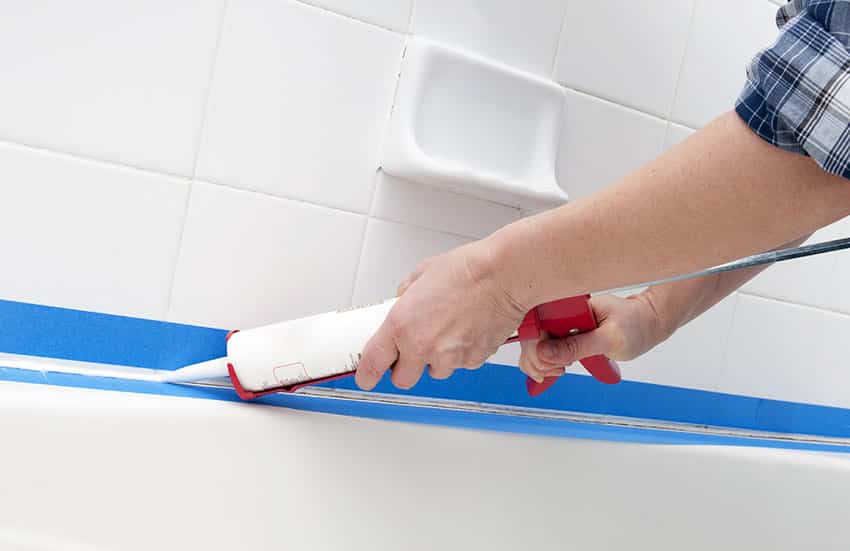
Yes, you can, although it is true that grout is the more porous material. This is because it is cement based. You also need to consider the fact that it works best for tiled shower areas. Grout is a material that just tends to bind better against the backer board where the tile is attached. The concrete material it eventually hardens into becomes more durable and long lasting in between the tiles.
On the other hand, there may be disadvantages when you use caulk instead of grout in the shower. Caulk is flexible enough in such a way wherein it stays intact especially in the areas where your shower floor meets the surrounding walls. Caulk can also work well for when you’re filling in the corner joints in your shower walls.
How Often Do You Need To Caulk Your Shower?
There isn’t really a finite number or period of time for when you need to recaulk your shower. However, there are definite signs for you to consider. But first, we need to understand why recaulking is essential in the first place. It’s simple. It prevents the water in your shower area from puddling up in areas where it shouldn’t be.
Here are the basic signs that it is absolutely time for you to reapply your caulk.
You see cracking, peeling, or missing parts in some areas – This is one of the most common signs of caulk that has been damaged or worn out. The moment you see this, it means that it is absolutely necessary to get your caulk replaced straight away.
Letting this go on for longer could mean that you are allowing water and even basic moisture to get trapped beneath your caulking. This could result to further water damage or mold to the affected areas. If the caulk application was fairly recent, this could also mean that you did not use the right kind of caulk in the first place.
If you start to see mildew or mold – Mold can bring you all sorts of problems. It can end with flaring your allergies up, cause damage to your home, or just look gross in general. Your shower area is the perfect area for mold growth, unfortunately. This is where your caulk comes in. It is meant to protect the shower area from such unsightly and unhealthy growths. The moment you see signs of them though would mean that your caulking has failed to meet its purpose, which means that you will have to replace it straight away.
It has aged at a timeline of 5 years or more – Even if your caulking still looks fine, you need to make sure that at the end of the day, you try to keep track of how old it is in the first place. Make sure that you replace your shower’s caulking right away by the time it turns 5 years or older, whether or not it has been showing signs of damage, or wear and tear.
Should Grout Be Sealed In Shower?

Always, the grout in your shower should be sealed. Sealing shower grout isn’t optional. Doing so will ensure that any moisture that could easily penetrate through the porous material will be effectively blocked out. Applying some sealer could prevent this. This will cause the water to slide right through, they won’t get stuck in the grout and tile, and the formation of mold and mildew will be easily prevented.
Does New Grout Stick To Old Grout?
No. You most definitely cannot apply new grout over your old grout. For a better understanding of the regrouting process, think of it more as a drywall material. You certainly won’t layer damaged drywall with a new one, would you? The same thing is true about grout. You first need to get it out before you can reapply the new one.
Is It Better To Grout Or Silicone?
It all depends on the type of application or use you have for it. If the use for it is strictly for in-tile joints, then it is always best for you to opt for grout at the end of the day. Grout is more durable and can withstand more abuse. It is guaranteed to last as long, or at least longer than caulk. Grout will always be on top for tile-to-tile adhesive needs. However, for everything else concerning materials other than tile, or when it comes to joining tile and some other material such as a porcelain tub or sink, you can opt for silicone caulk.




